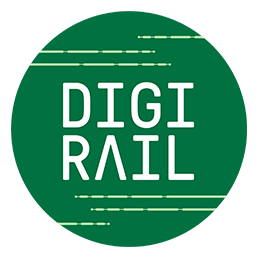The tendering process for the procurement of the Command and Signalling system for the EKA track section of Digirail is currently ongoing. The reform will provide increased capacity and many additional opportunities. The train control system and the Radio Block Centre form the most important part of equipment procurement.
During week 37, Digirail published a request for participation seeking tenders for the procurement of the Control Command and Signalling system renewal. All those who meet the criteria and are willing and able to submit an application for participation, can do so. From among the applications, approximately five suppliers shall be selected for the negotiations based on their references. Negotiations with the selected suppliers shall take place at the turn of November–December, and an agreement with the selected supplier will be concluded in February.
The key parts of the Control Command and Signalling system procurement are the new train control system and Radio Block Centre. They are part of the basis of the system on which the functionalities of Digirail can be built. In the Control Command and Signalling system renewal, Digirail will switch to a radio network-based train control system, which seeks improved capacity and a new approach to modularity and interfaces with different standards.
In practice, the Control Command and Signalling system renewal enables, for example, the reduction of block sections between trains, a track with increased traffic and the automatic operation of the system’s train control without intermediaries. The need for maintenance and trackside equipment is also reduced.
“The reform will make system maintenance easier and lighter. The new train control system is independent and automated,” says Project Manager Jarmo Kuusela.
The first step towards a large and decentralised procurement entity
This is a major system renewal, the first part of which is now being procured. The first Control Command and Signalling system to be acquired is a kind of a base system, which in itself is not visible from the outside. Its purpose is to create a framework for other systems.
In addition to the interlocking and Radio Block Centre, procurements to create an entity will be carried out by several different agencies during the project. The Finnish Transport Infrastructure Agency’s procurements include the concrete trackside equipment, while Fintraffic will acquire the remote control system.
As an essential part of the procurement, similar acquisitions are also made for the laboratory. They will allow testing of the practical functionality of the systems during the first phase. Importance and attention are placed especially on the interfaces.
“From the very beginning, we are focused on ensuring that the systems are compatible,” Kuusela says.
The lifetime expectancy of the devices to be purchased now is long. In the requirements, the operating period is set at approximately 25 years.
The work to be performed for decades will progress in phases and be completed in 2040
In practice, the renewal in the first phase comprises of 190 kilometres of track on which the new Control Command and Signalling system shall be built. The Lielahti-Rauma-Pori track section was chosen as the target for the first phase, as it includes both commercial as well as passenger and freight traffic, and operations in its area are based on many different operating models.
The goal is that the construction of the first phase will be completed in autumn 2025 and the train control system will be operational in 2027. This will eventually lead to the updating of the entire railway network in Finland.
The work during the construction phase shall largely overlap. At the same time as the new system is being built, operation shall continue with the old system. For example, when the train control system is being updated, the supplying of rolling stock is about to start for the rolling stock operators.
“At first, this will of course be a kind of a learning curve in terms of procurement and interoperability, and only then will we start implementing the system throughout Finland. This is only the first round, and it will not be ready until 2040,” Kuusela describes.
The trackside equipment is expected to be completed at the same time as the Control Command and Signalling system procurement. The Digirail project as a whole will be completed at once, but progress between individual components may take place at different times. The importance of cooperation and information flow is emphasised in a project involving numerous different actors and components.
In addition to a mere system change, it is a question of changing the entire way of working.
“The reform will not only change the system, but also the way in which we operate. The new systems will give us tools to do things differently than before, and employees who are engaged in practical operations shall also have the opportunity to try new things,” Kuusela sums up.
